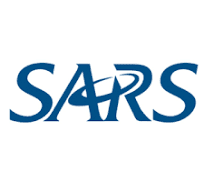
Provident & Retirement Fund
Planning for Retirement is a crucial aspect of securing your financial future. In South Africa, two popular vehicles for retirement savings are Provident Funds and Retirement Annuity Funds.
Both options offer tax benefits and help you build a nest egg for your golden years. However, they have distinct characteristics, rules, and benefits. Let's dive into the details to help you make informed decisions about your retirement savings.
Provident Fund
Characteristics
Employer-sponsored retirement fund
Contributions made by employer and/or employee
Typically offered to employees as a benefit
Funds are pooled and managed by a board of trustees or insurance company
Rules:
Employer contributions are tax-deductible
Employee contributions are made from taxable income
Withdrawal benefits are taxed as income
No limitation on withdrawal amounts at retirement
Minimum benefit requirement: 2/3 of fund value must provide an annuity (from age 55)

Retirement Funds
Characteristics
Individual, voluntary retirement savings plan
Contributions made by individual (not employer)
Portable, allowing individuals to take funds with them when changing jobs
Funds are managed by insurance companies or asset managers
Rules
Contributions are tax-deductible (up to 27.5% of taxable income or R350,000)
Funds grow tax-free
Withdrawal benefits are taxed according to retirement fund tables
1/3 of fund value can be taken as cash at retirement; 2/3 must provide annuity
Compulsory annuitization from age 55 (unless fund value < R247,500)
Key Differences
1. Employer involvement: Provident funds are employer-sponsored, while RAs are individual plans.
2. Contribution structure: Provident funds allow employer contributions, while RAs rely on individual contributions.
3. Portability: RAs are portable, whereas provident funds are tied to employment.
4. Taxation: Withdrawal benefits from provident funds are taxed as income, while RA withdrawal benefits follow retirement fund tables.
5. Annuity requirements: Provident funds require 2/3 of fund value to provide an annuity, while RAs require 2/3 of fund value to provide an annuity, with 1/3 available as cash.
Considerations:
1. National Treasury's Retirement Reform: Introduced in 2016 to encourage retirement savings and standardize fund structures.
2. Preservation requirements: Rules governing transfer of funds between providers to prevent unnecessary withdrawals.
3. Fees and charges: Compare fees among providers to ensure optimal returns.
The following pages will further assist you with your retirement journey:

Increasing your Provident Fund can have significant tax benefits. Here's a breakdown of how it works:
Tax Deductions on Contributions
When you contribute to a provident fund, you're eligible for tax deductions on those contributions. The deductions are limited to 27.5% of your taxable income or R350,000, whichever is lower. For example, if you earn R1 million per year and contribute R200,000 to your provident fund, you'll get a tax deduction of R200,000.
Reduced Taxable Income
By contributing to a provident fund, you're reducing your taxable income, which means you'll pay less income tax. Using the same example as above, your taxable income would decrease from R1 million to R800,000, resulting in lower income tax liability.
Tax-Free Growth
The investments in your provident fund grow tax-free, meaning you won't pay capital gains tax or income tax on the investment returns. This allows your retirement savings to grow faster over time.
Tax Benefits at Retirement
When you retire, you can take up to one-third of your provident fund benefit as a lump sum, which is taxed according to a special tax table. The remaining two-thirds is typically used to purchase an annuity, which provides a regular income stream in retirement. The annuity income is taxed as ordinary income, but you may be eligible for rebates or exemptions depending on your age and income level.
Example of Tax Benefits
Let's say you contribute R10,000 per month to your provident fund for 20 years, and the fund grows to R5 million by the time you retire. You take R1.67 million (one-third) as a lump sum, which is taxed at 18% (R300,000). You use the remaining R3.33 million to purchase an annuity, which provides a regular income stream in retirement. The annuity income is taxed as ordinary income, but you may be eligible for rebates or exemptions depending on your age and income level.

Tax and Retirement
Tax and Retirement
Congratulations on your retirement. We believe that your retirement should be enjoyed and that you should not stress about tax. Therefore, here are a few tips on the tax in respect of retirement.
Read the SARS article HERE

Pension Funds, Provident Funds & Retirement Annuities Explained
Most people have heard of pension funds, but did you know there are other ways to build your retirement savings? There are lots of options out there, and they can be a little overwhelming. We’re here to help by explaining what the differences are between pension funds, provident funds, and retirement annuities. By being more informed, you can make better, smarter financial decisions about your retirement planning.
Read the Old Mutual articleHERE
